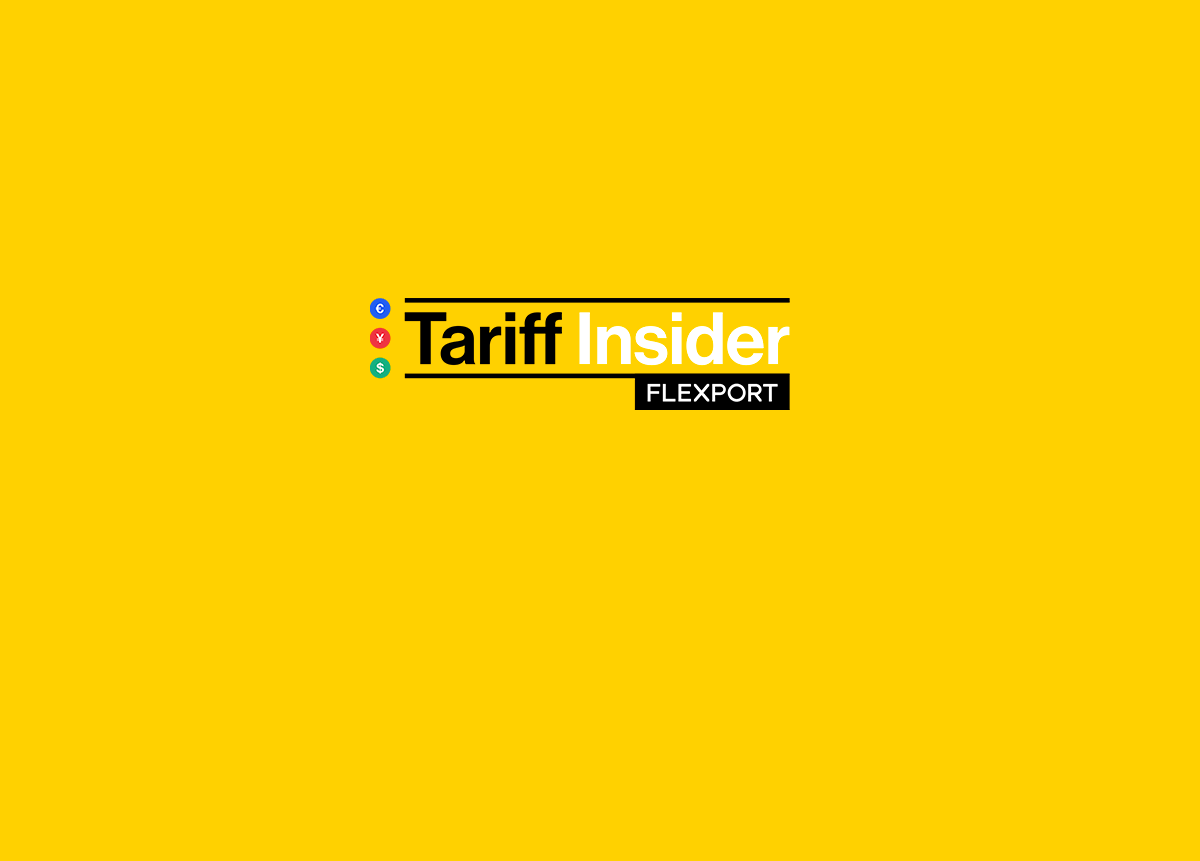
2018 年 11 月 28 日
Tariff Insider: November 27, 2018
Tariff Insider: November 27, 2018
Welcome to the first edition of Tariff Insider.
On March 22, 2018, President Trump announced tariffs on up to $60 billion worth of Chinese goods, signaling that trade tensions between the U.S. and China would result in more than just talk. As of October 2018, the U.S. has levied a total of $250 billion in tariffs applied exclusively to China. In response, China has levied a total of $110 billion in tariffs applied exclusively to the U.S.
In Game of Thrones vernacular, winter is coming.
With these new tariffs taking effect in 2019, shippers need to – and are already trying to – get ahead of serious potential cost increases and capacity crunches. But with so much coverage, it can be hard to keep up. That's why Flexport is introducing this new ongoing blog series: Tariff Insider.
Through Tariff Insider, we'll aggregate some of the top headlines related to the U.S.-China trade war each week – giving you a convenient, one-stop resource for the latest tariff news, commentary and trends.
As The Modern Freight Forwarder, Flexport has a unique perspective into the myriad ways the trade war could impact our customers. And our ocean and air shipping, warehousing, customs, and compliance experts are focused on what tariffs could mean for our customers and carriers. Count on us to help surface news you need.
The Big News: the reported effect of tariffs on U.S. import and export volumes.
Flexport CEO Ryan Petersen was on CNBC this morning to discuss President Trump's threats of more tariffs and the corresponding effects on shippers, manufacturers and the global economy. From advancing shipment dates to moving manufacturing to Southeast Asia, businesses are looking for any avenues to mitigate costs.
The American Trucking Associations' advanced, seasonally adjusted (SA) For-Hire Truck Tonnage Index jumped 6.3% in October, an increase of 9.5% year-over-year. ATA Chief Economist Bob Costello said, "This is likely a pull ahead of imports, as shippers try to take delivery of goods before January 1, when tariffs on a large list of goods China increases from 10% to 25%." Shippers have been taking even more air capacity than what's typically seen during peak season, but many expect this to slow down come January.
This aligns with news from last week, with Maersk CEO Soren Skou noting that Chinese imports to the U.S. grew 5-10% last quarter, with exports to China falling by 25-30%. According to the Wall Street Journal, Southern California, Georgia and Virginia ports experienced double-digit growth in import volume from September to October.
That said, the trade war's repercussions extend far beyond import/export volumes. Here you'll find these stories organized according to how tariffs are impacting shippers, industries and the global economy at large.
Impact: Shippers
Shifting manufacturing out of China: More than half of respondents in a recent poll from American banking group Citi indicated that they plan to make changes, including moving manufacturing sites and investing in new ones, primarily in Southeast Asia. That said, while there is lots of discussion about moving operations, few companies are actively making changes. According to Chris Rogers, a research analyst at Panjiva, "Nobody's going to make any changes until they see how this summit goes between President Trump and President Xi."
Rising prices: Makers of clothing dryers, washers and other major appliances have increased prices 1% in the last 12 months. Some brands also report that they'll limit holiday promotions. Arancha Gonzalez, executive director of the International Trade Center, said on Tuesday, "I hear small businesses saying they have to absorb costs...and then I hear other companies saying we are passing this onto consumers."
And the increased costs are significant: "U.S. importers are said to be paying 50 percent more in tariffs in September compared with the same month last year." The focus for most shippers, however, is on what's coming after the holiday: the pending January 1 tariff increase. If President Trump does follows through with the increased taxes on consumer goods, "$44.5 billion worth of phones could be hit [and] more than $12 billion worth of toys."
Impact: Industries
Auto industry: If it's determined that auto imports do "pose a threat to national security," as stated by President Trump, the result could be new sanctions under section 232 of the Trade Expansion Act. This places added pressure on the auto industry, which is already struggling to decide on who should bear the cost of tariffs. Pierburg US LLC, a manufacturer of parts for Ford and Jeep, sued a supplier of 20 years earlier this year over tariffs. Honda will shift production of the Acura RDX SUV from their facility in Ohio to factories in China by the end of 2018 to avoid the 40% Chinese tariff on U.S. auto imports.
Farming industry: Starbucks CEO Kevin Johnson says the company isn't immune to the effects of the trade war, but it's "playing the long game." Johnson said the company has "built Starbucks in China for China" because the country is the coffeemaker's second-largest market after the U.S. Also, S. soybean farmers have been impacted—as China bought approximately 32 million tons of the product last year and now buys close to none. One of the most noteworthy shifts is an increase in pork consumption, which has been caused by a significant reduction in U.S. pork exports to China and Mexico, creating a surplus in U.S. supply and resulting in lower prices.
Impact: Global Economy
Low perceived impact in the S&P so far: Savita Subramanian, equity and quant strategist at Bank of America Merrill Lynch, says that only ~9% of companies in the S&P 500 index noted a negative impact from the tariffs. This follows a report from FactSet data on the commentary that accompanies third-quarter profit reports.
FX risk and Chinese real estate: Market uncertainty due to the tariff battle has spurred record trading between the American dollar and Chinese yuan in recent months. CNBC reports that this is due to the move by businesses and investors to hedge their foreign exchange risk. The Chinese housing market has already been affected by the trade war. While the baseline forecast calls for a 15% fall, if it worsens, Hong Kong's housing prices could fall by as much as 25% next year.
Want to get more news and insights about the evolving shipping and logistics landscape? Sign up for Flexport's Weekly Market Update. And check back here next week for an updated round-up of recent tariff coverage.



